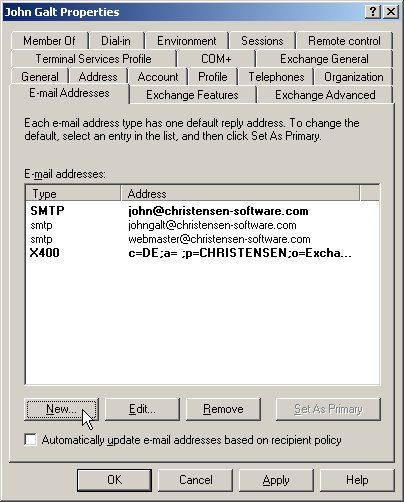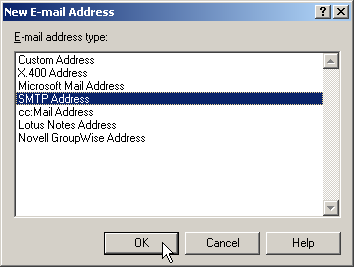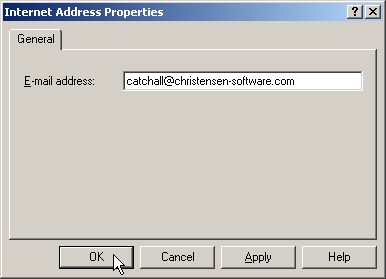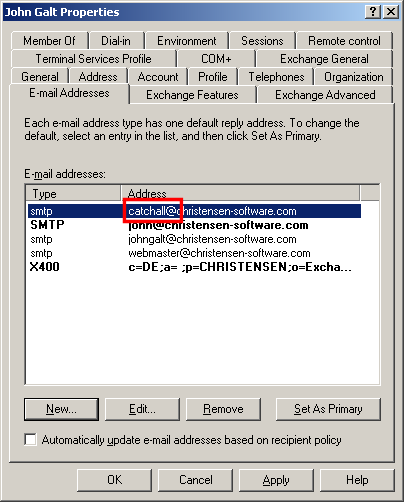How do I configure CSCatchAll? The Administrator utility only allows me to enter a license code.
You don't.
It may seem strange, but CSCatchAll does not need any configuration at all!
But how do you configure the user that will receive the catch-all emails for a given domain? Very easy: Just add the smtp email address "catchall@domainname" to the list of addresses of that user in the active directory. Replace "domainname" with your smtp domain name.
Suppose we have a user "John Galt" that should receive the catch-all emails. As you can see below, John currently has the email addresses "john@christensen-software.com" and "johngalt@christensen-software.com" in addition to "webmaster@christensen-software.com". To make John the user receiving all the catch-all emails you just add "catchall@christensen-software.com" to the list of email addresses:
Use Administrative Tools > Active Directory Users and Computers and open the properties of the user that should receive the catch-all emails that no regular other user catches. Go to the E-mail Addresses tab.

Click on New... to add a new email address and choose "SMTP Address" as the type of email address to add:

Enter "catchall@domainname" as address to add. In our case it is "catchall@christensen-software.com", so in your case it will be something like "catchall@yourdomain.com":

This is the list of addresses after adding the catchall address.

You do not need to restart CSCatchAll or reboot the server. CSCatchall will start routing emails addressed to non-exisiting users to the new catchall user John right away.
If you have multiple domains defined in your Exchange Server you can add all of the catchall addresses to one user or distribute them to different users by adding the appropriate catchall@... addresses in the active directory.